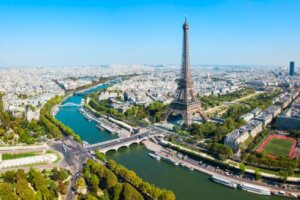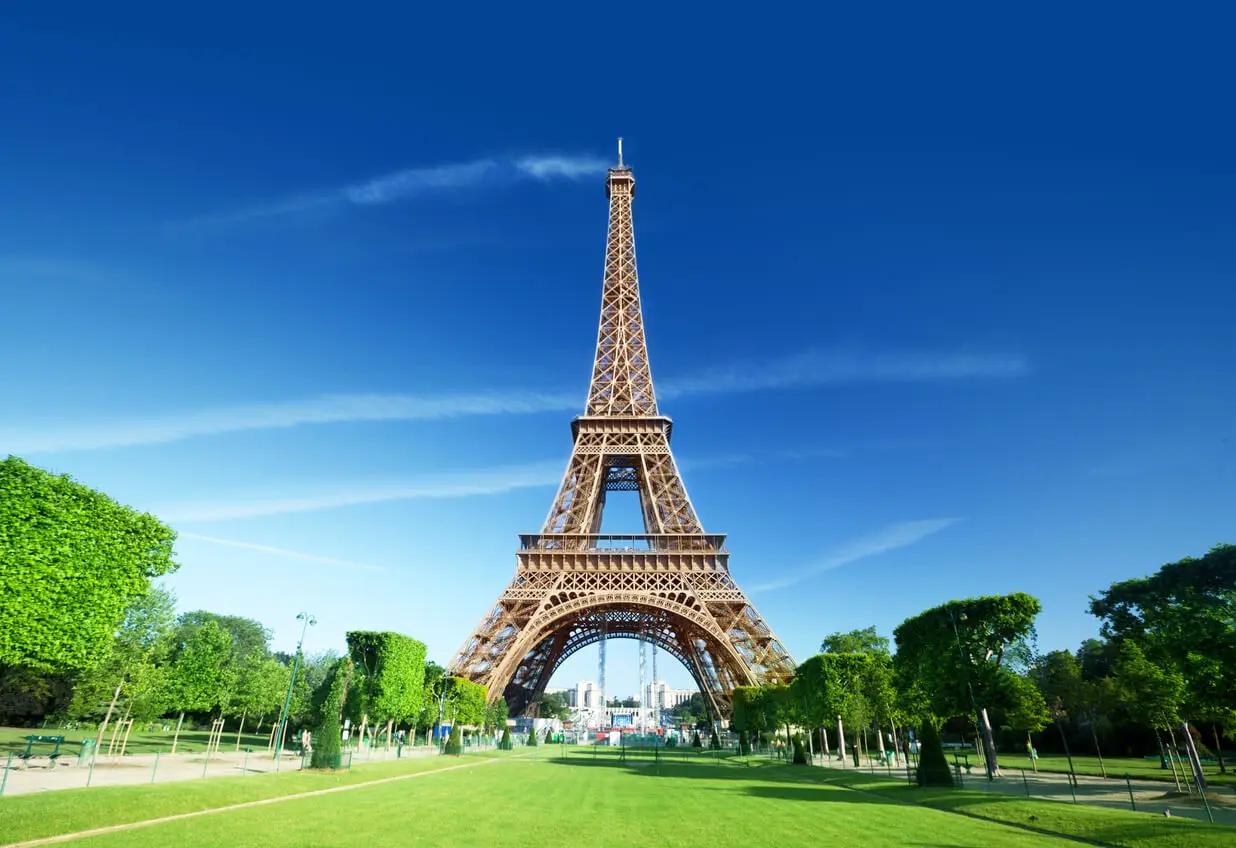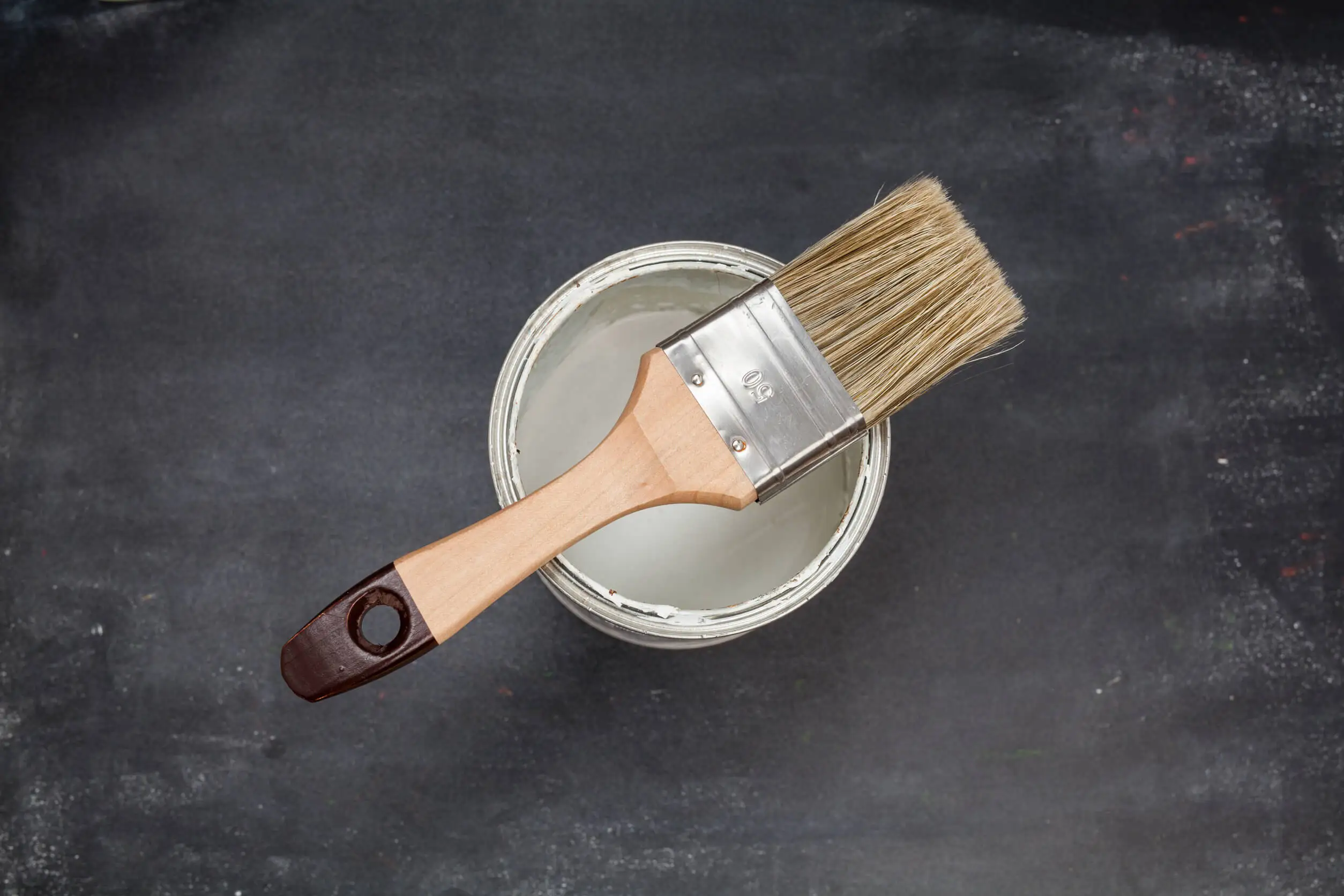Why is the Eiffel Tower Now 6 Meters Higher? We'll Tell You the Reason

In theory, the Eiffel Tower was supposed only to only last 20 years. But more than a century has now passed, and another six meters have been added to this historic monument to bring it closer to the sky. Now the twoer measures 330 meters; something that was not estimated in 1889 when it was erected for the Paris World Expo.
Its creator, the engineer and businessman Gustave Eiffel, represented with this construction the technological, architectural, and industrial advances of the time. This was reported in National Geographic magazine. He was joined by his counterparts Emile Nouguier and Maurice Koechlin, as well as the architect Charles Leon Stephen Sauvestre.
The elevation of the Parisian landmark today is related to its original function: the transmission of radio stations. At the time, this didn’t allow it to be dismantled. But what is behind the new length of the iron tower?
The reason why the Eiffel Tower is now six meters higher
After the inauguration of the tower, some antennas were added to increase the height. Without these elements, the work measured 300 meters; with several of them, it reached 324 meters up until 2000.
In 2022, the monument reached 330 meters with a new antenna for digital audio transmission. The installation is valued at one million euros and enables the capital’s access to digital terrestrial radio.
Through Twitter account @LaTourEiffel, the transformation of one of the most visited tourist sites in the world was announced. They had to prepare the assembly for more than a year since they needed to coordinate the transfer and location of the device in advance since it weighs 350 kilograms.
The logistics involved closing access to the tower for a whole morning for the safety of passers-by.
On March 15 of this year, travelers and locals watched as a helicopter lifted the antenna to the top of the tower, where the technicians who would anchor it to the summit were waiting. The event in the French capital was broadcast on television around the world.
Contrary to the planning process, the execution took only 15 minutes and was supervised by the company Société d’Exploitation de la Tour Eiffel (SETE), which is in charge of operations at the monument.

We think you may also enjoy reading this article: Check Out These 20 Quirks, Rituals, and Fun Facts about Rafael Nadal
How radio and science saved the Eiffel Tower
In its early days, the cultural and artistic personalities of the time rejected Eiffel’s design. Groups condemned the construction in the city, arguing that it was in bad taste and should be destroyed.
However, over time, the engineer set up a room where he conducted astronomical research and measurements in this wrought iron work capable of supporting more than 10,000 tons. He also claimed that the project would be useful for science in the future.
In 1900, the French Navy anchored a radio antenna at the top of the tower. Later, during the Nazi occupation of Paris, the device allowed the broadcasting of German television.
Over the years, different telecommunication antennas were assembled. These actions saved it from dismantling. Today, the piece is an icon that’s impossible to separate from France.
Curious facts about the Eiffel Tower
Official data of the portal Eiffel Tower specifies that the metallic structure weighs 7300 tons and consists of 18,038 pieces of iron. The base is made of four pillars in a square of 125 meters on the ground.
The first level is 57 meters high, the second rises to 115 meters and the third to 276 meters high. You can reach its floors by elevators or by climbing 1,600 steps.
More fun facts about the emblem of the city of lights are the following:
- The Eiffel towel will be celebrating its birthday on March 31. It’s already 133 years old.
- It took two years to build the tower, and construction started in January 1887.
- Eiffel’s project won a competition among 107 proposals to commemorate the centenary of the French Revolution.
- The Eiffel tower was the tallest building in the world for four decades until it was displaced by the Chrysler Building in New York.
- In summer, it looks about 18 centimeters larger than in winter because of the thermal expansion of the metal.
- The “iron lady” shares its nickname with Margaret Thatcher, former Prime Minister of the United Kingdom.
- Before France, it was offered to several cities and all of them rejected it.
- It’s painted every 5 years with 50 tons of paint that prevents corrosion. On the second floor, visitors can vote for the color they prefer for the iron lady.

Like this article? You may also like to read: What is a Brain Aneurysm? Learn About Emilia Clarke’s Condition During Games of Thrones
Will the growth of the Parisian emblem continue?
The Eiffel Tower has been an ally of radio since the invention of this means of communication. Its architecture goes hand in hand with the advancement of technology, as conceived by its creator at the time it was built.
For now, 330 meters is the tallest the tower has ever been. However, we can’t rule out the possibility that it will lend its framework to serve as a link with science and innovations in the service of the public in the future. What is certain is that the Eiffel Tower will always remain a symbol of Paris.
All cited sources were thoroughly reviewed by our team to ensure their quality, reliability, currency, and validity. The bibliography of this article was considered reliable and of academic or scientific accuracy.
- Fernández, Tomás y Tamaro, Elena. Biografía de Margaret Thatcher. Biografías y Vidas. La enciclopedia biográfica en línea. España; 2004. https://www.biografiasyvidas.com/biografia/t/thatcher.htm
- @LaTourEiffel. Twitter. Marzo; 2022. https://twitter.com/LaTourEiffel/status/1503693805761015814?cxt=HHwWjMC59ZTjmN4pAAAA
- La Torre Eiffel en cifras. https://www.toureiffel.paris/es/el-monumento/cifras-clave
- Sadurní JM. Gustave Eiffel, el ingeniero que iluminó París con su torre. National Geographic. 2022. https://historia.nationalgeographic.com.es/a/gustave-eiffel-ingeniero-que-ilumino-paris-su-torre_18027
- Sociedad de Explotación de la Torre Eiffel (SETE). https://sete.toureiffel.paris/es/la-sete
This text is provided for informational purposes only and does not replace consultation with a professional. If in doubt, consult your specialist.








